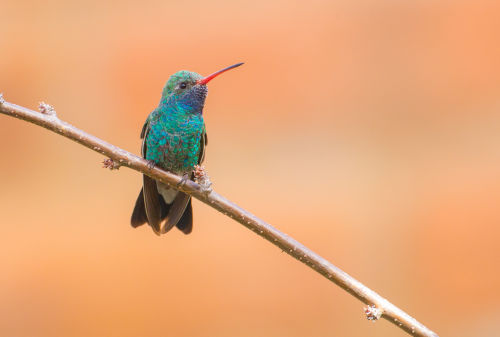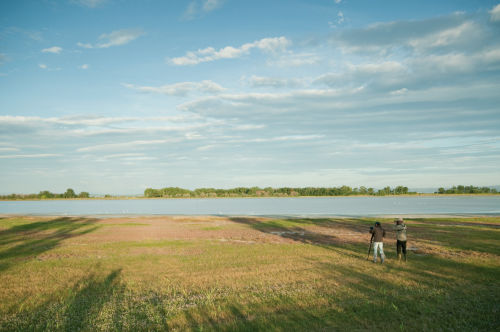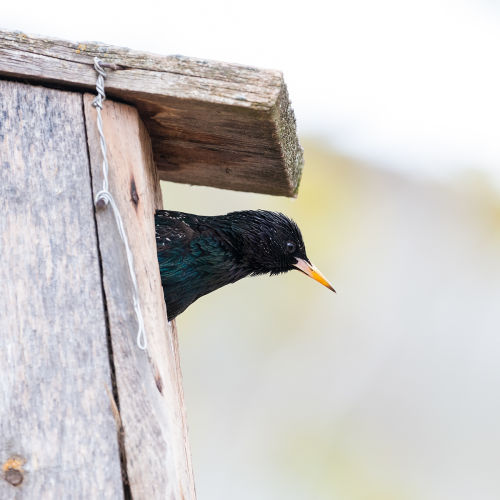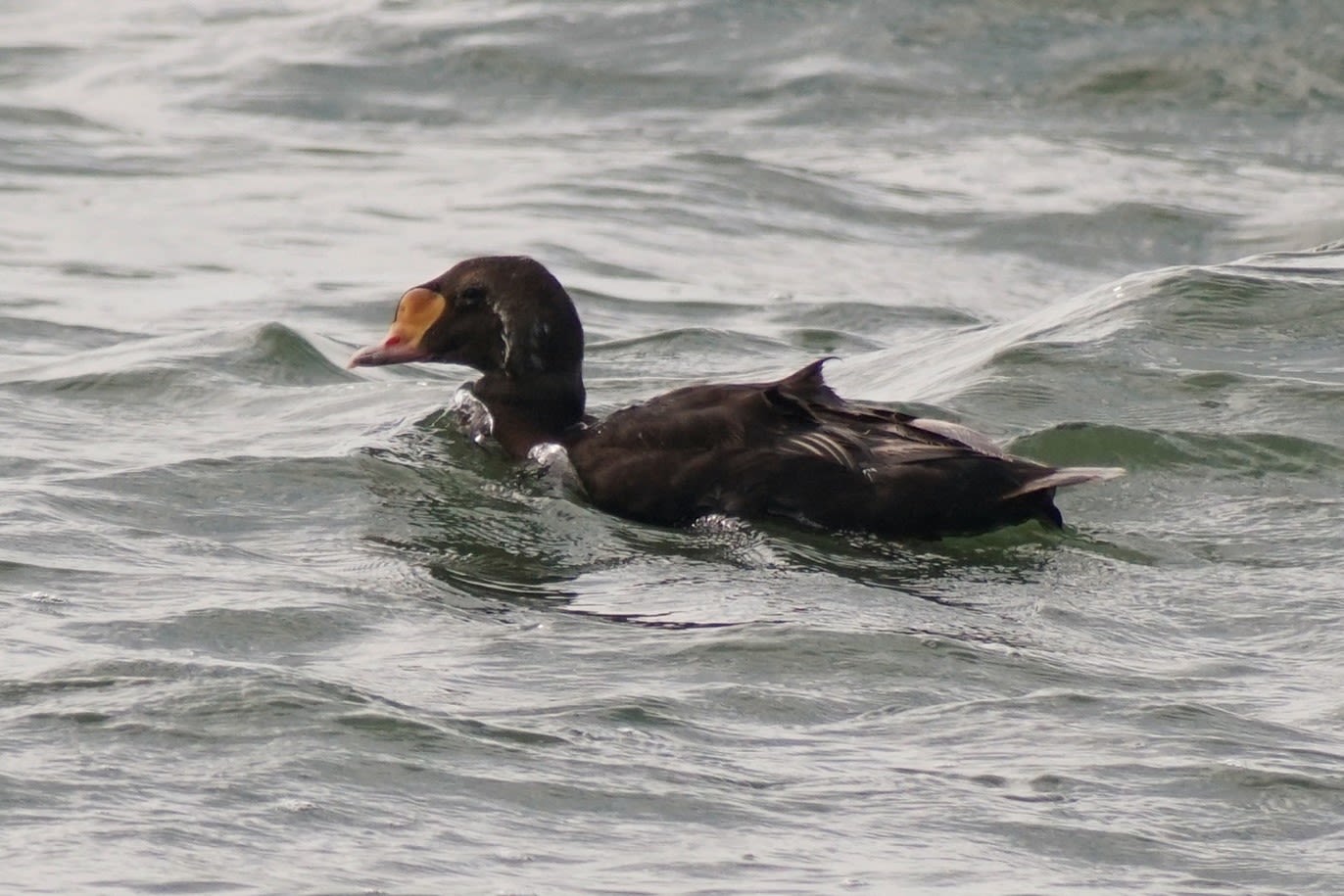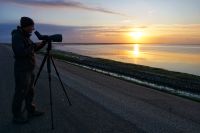Male King Eiders (Somateria spectabilis) are spectacular ducks with contrasting black and white plumage, a misty blue head, greenish cheeks, pale salmon-coloured breast and a striking orange-yellow lobe above their red bill.
A rare sight in the Netherlands
Breeding along the northern coastlines of North America, Greenland and Russia, with lower numbers in northern Scandinavia, the species is more likely to be encountered along the coasts of northwest Europe during winter. Nevertheless, in the Netherlands it remains a rare visitor with fewer than twenty records in the last 45 years. So, when one was reported this summer close to where I was birding, I headed out early to try to find it.
“YOU SOMETIMES ONLY SEE A BIRD FOR A BRIEF MOMENT, MAKE THAT VIEW COUNT.”
MARK COLLIERA king among commoners
As the sun rose over the Wadden Sea a group of Common Eiders (Somateria mollissima), amongst which the King Eider had been seen, was present close to the shore. However, this search would not be that straightforward. The eiders, including the King Eider, were in their dull eclipse plumage, and finding him amongst the similarly coloured Common Eiders would require looking in detail. Good thing, I brought my ATX with the 115-mm objective module with me.
The rising tide brought the group of eiders close to the shore.
As I scanned through the group of ducks, I was looking for one small feature that would give away the presence of the King Eider: the ‘sails’. Unlike Common Eiders, adult King Eiders have two small triangular fins (or ‘sails’) on their back. Most of the eiders were hunched up with their head tucked tightly under their wings, so this was one of the few features visible.
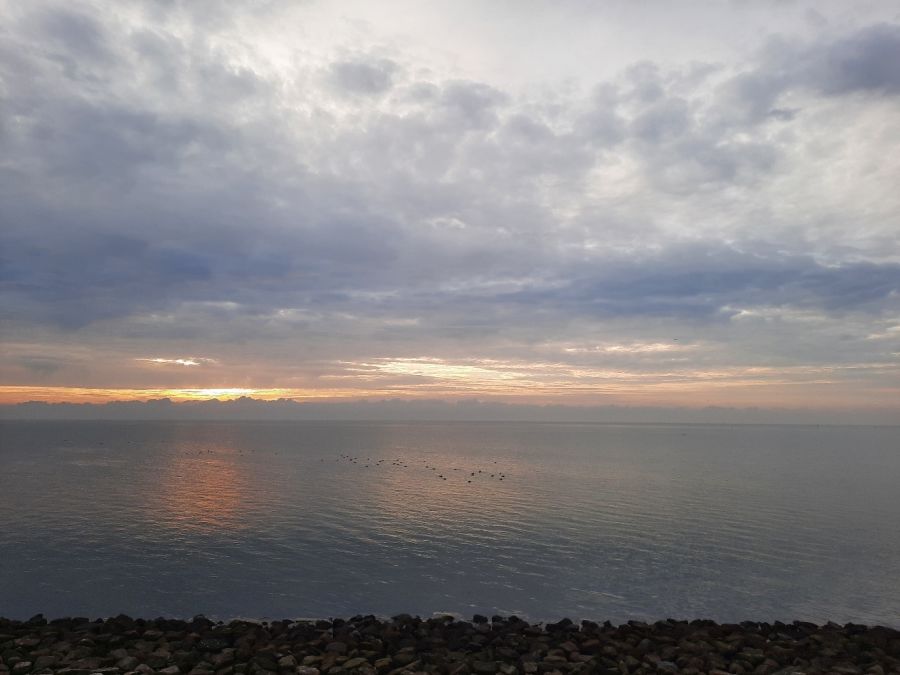
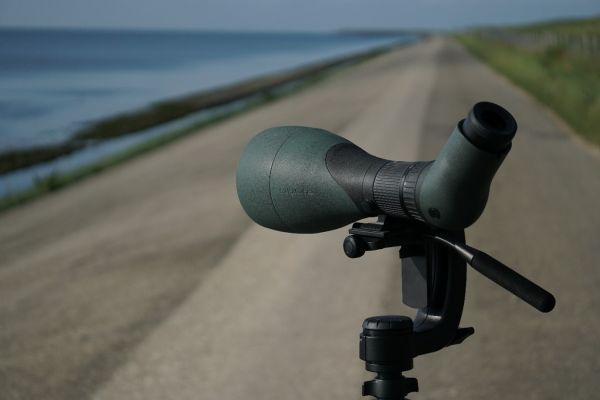
The ATX with the 115-mm objective module on top of a PCT professional carbon tripod with a PTH professional tripod head and a BR balance rail helped me get closer to the eiders trying to spot the king among them.
The breeze lifted feathers on the backs of the eiders that turned away from the wind giving the brief impression of ‘sails’. However, one bird stuck out due to a distinct thorn shape of its ‘sails’. I looked closer with my ATX with the 115-mm objective module and could see the top of the yellow lobe peeking out from between the wings.
“THERE’S NO COMPROMISE: HUGE, BRIGHT IMAGE AND INCREDIBLE CLARITY.”
MARK COLLIER ABOUT THE 115-MM OBJECTIVE MODULENow faded and shrunken, the lobe matched the subdued plumage of the bird that seemed to be content hiding amongst the Common Eiders.
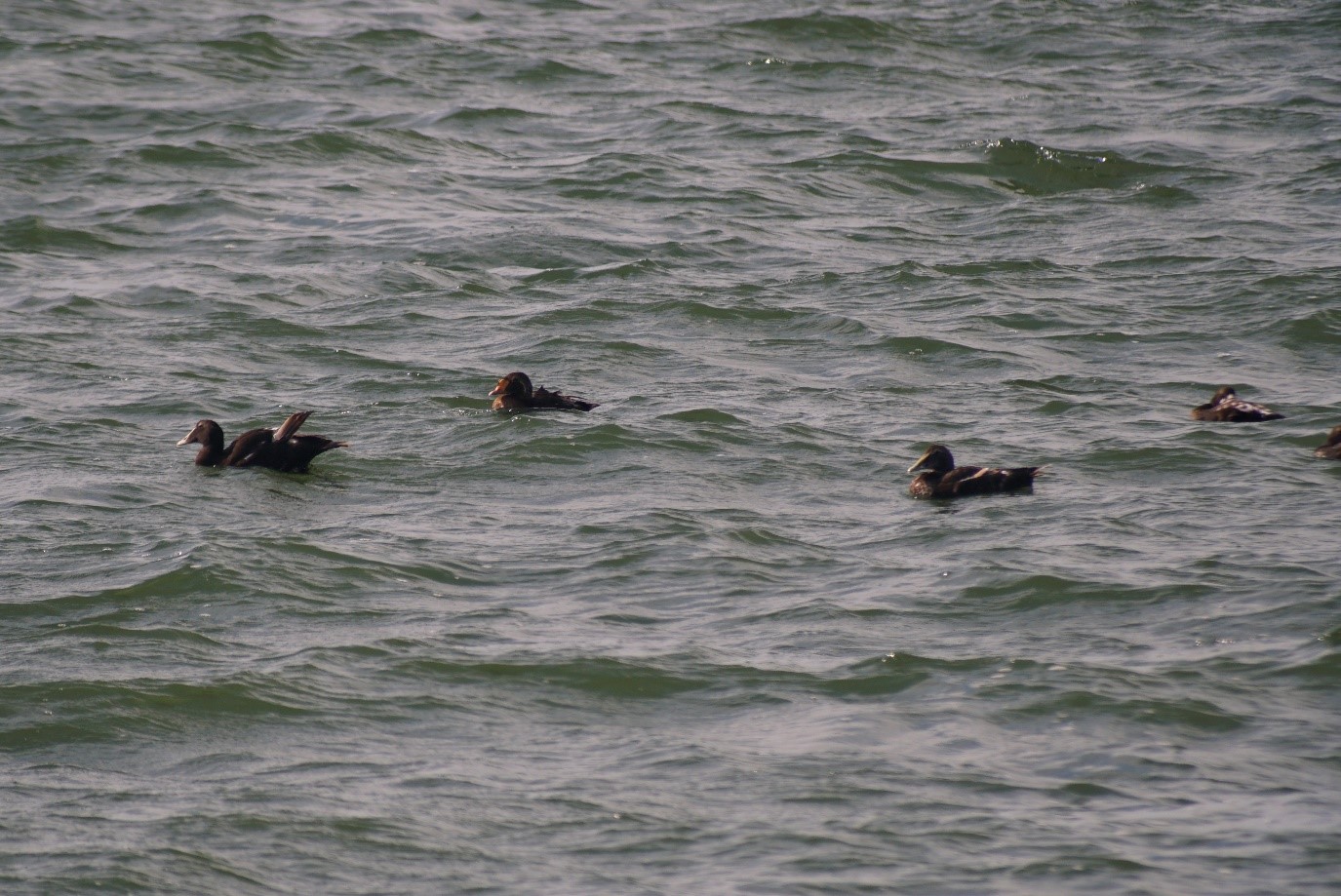

The small ‘sails’ of the King Eider were visible at some distance.
Looking closely the yellow bill lobes are just visible even when the King Eider is resting.
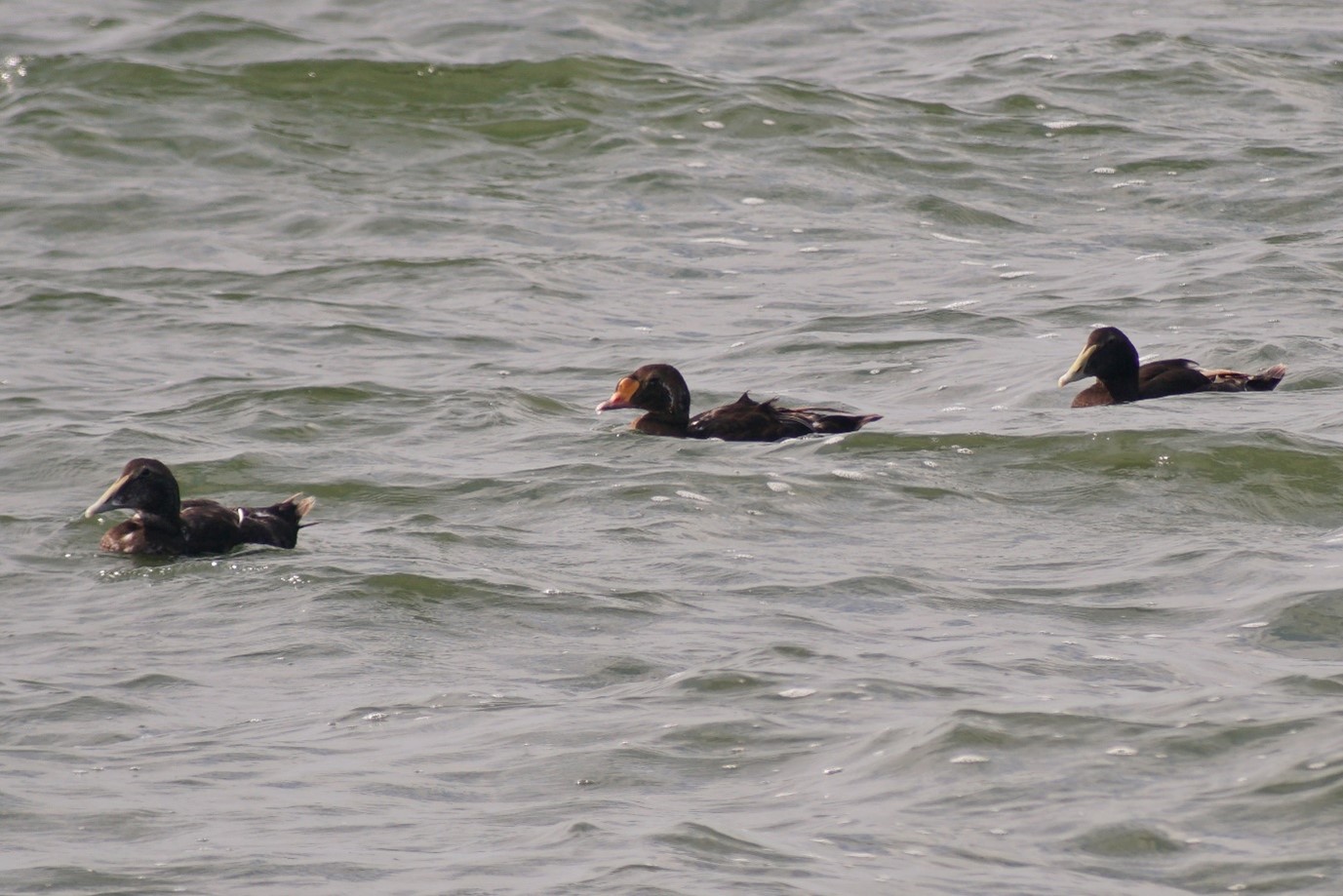
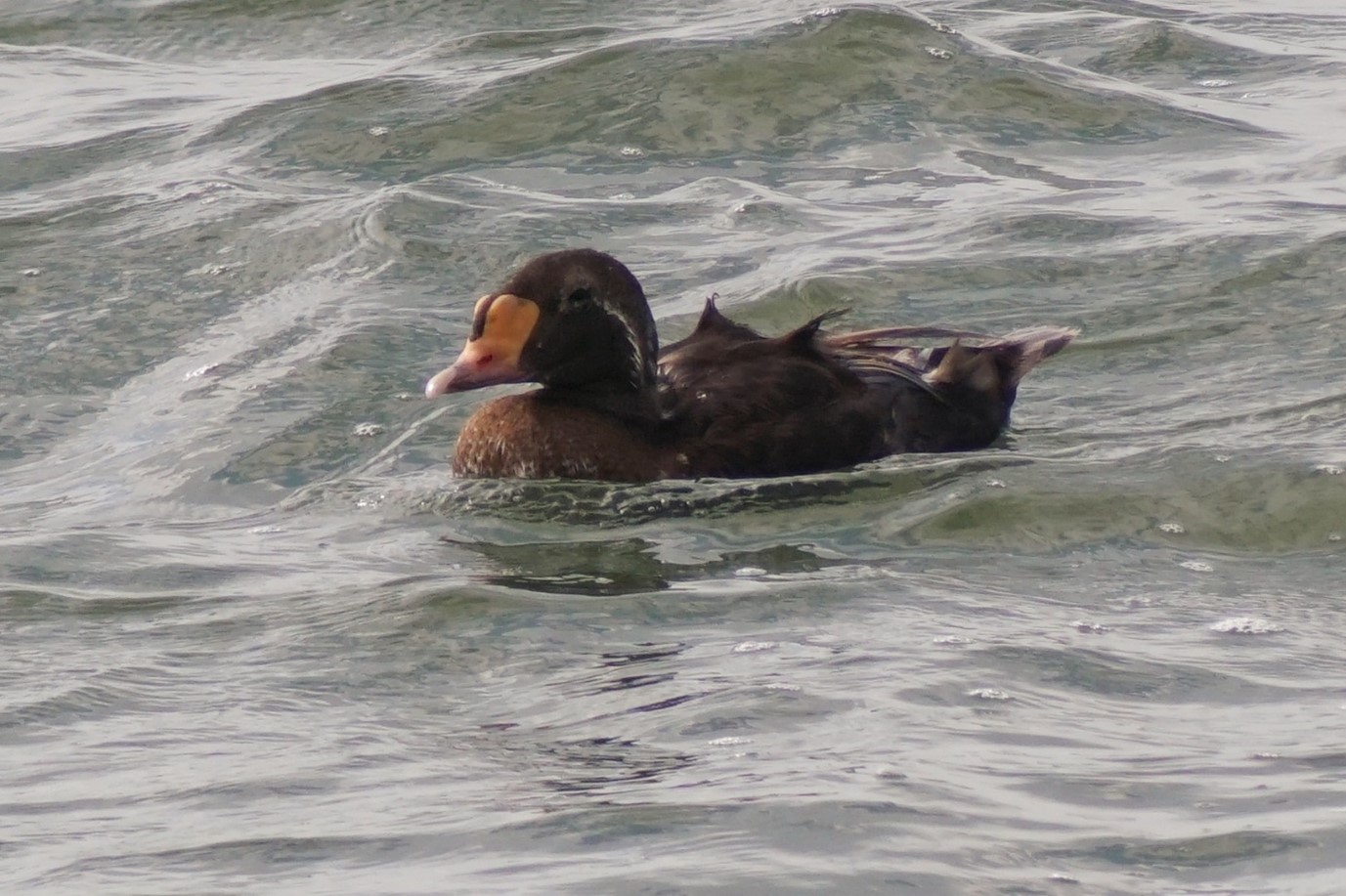
The yellow bill lobes and small ‘sails’ reveal the presence of the King Eider.
A male King Eider in eclipse plumage distinguished by the ‘sails’, yellow lobe and bill shape.
Assuming this individual will stay in the area, I’ll try and find him again in autumn when he should again have moulted into his more recognisable breeding plumage.
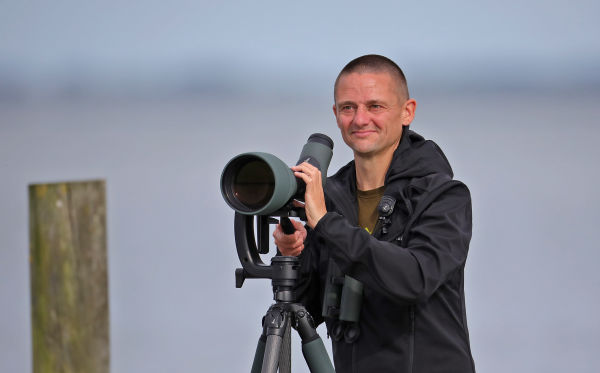
About the author:
Mark Collier
Mark Collier is an ecologist and dedicated birder. Born in 1976, this British ornithologist loves the outdoors, nature, photography, digiscoping, hiking, climbing, and – of course – birding. His beloved pastime brings him both peace & relaxation as well as excitement & fascination.
You may also follow Mark on social media: Facebook, Instagram, or Twitter.

Intended Use
Shore Birding
What do I need to observe shorebirds, sea birds, and waterfowl?
Premium spotting scopes and binoculars which draw in all the light and deliver it with high magnification up to the tiniest detail. They will make it easier to get closer to the beautiful storm-petrels dancing on the waves far offshore or find that rare King Eider among a group of Common Eiders.
